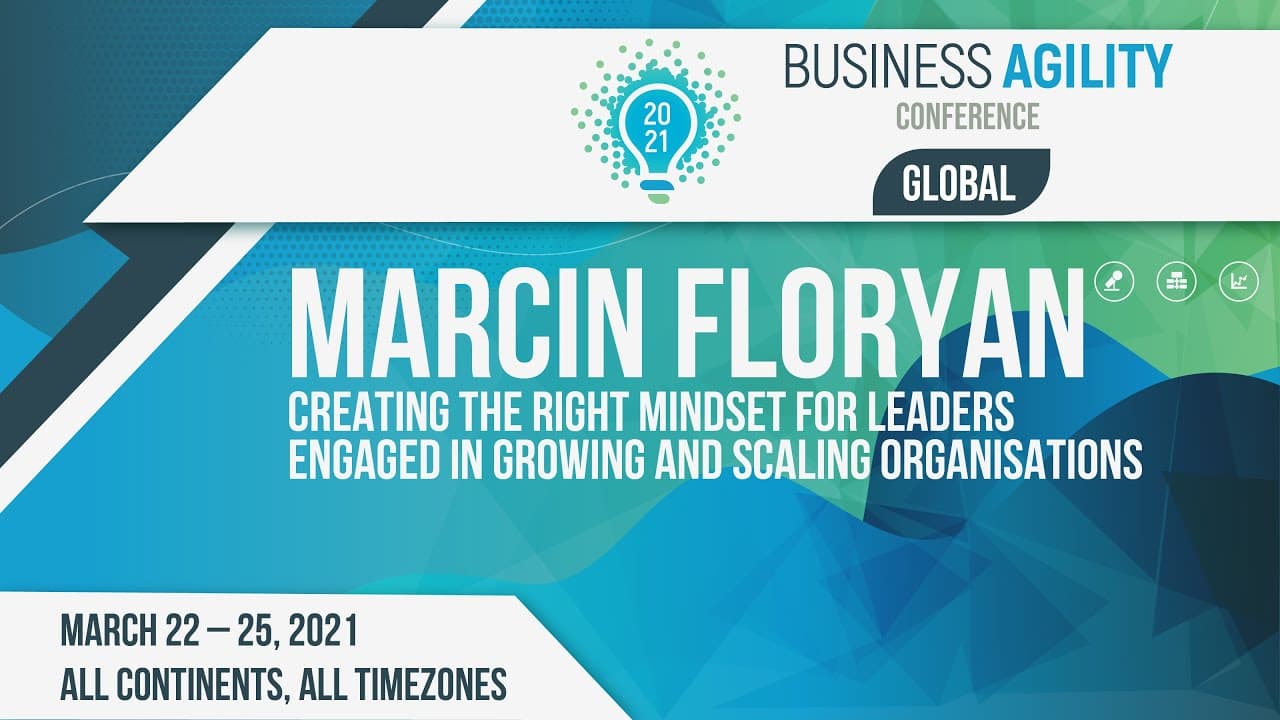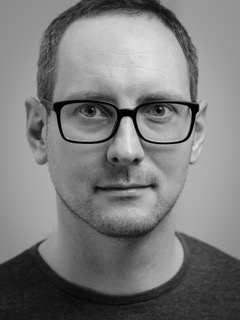Right, thank you very much, Mike, and great to be here. I will try to share a little bit of what you've mentioned and give you a little peek into how we’re thinking about Spotify. I’ll also try to convince you that, much as technology is absolutely my passion and the passion of a lot of people at Spotify, it’s probably not the most important thing. Training is useful for us to build really good organizations. Let me get myself started with a little timer, so we don’t go over time. I find it super helpful, so let’s quickly do it and get right into it.
Let’s start with some pictures. How do you like this nice lovely rustic kitchen, or this more modern kitchen? Or maybe you like a minimalist kitchen? I’m showing you kitchens because in the last few months we’ve been doing big refurbishment projects in the new house we moved into. Obviously, kitchens were on my mind, but I haven’t messed up this presentation with my mood board at home. I want you to ask yourself this question: which kitchen do you want? And really the question I think we are wanting to ask ourselves is, which software development organizations do we want?
As Mike said, I’m Marcin Florian, a tech tribe lead at Spotify, and I work with an organization called Playback. Playback is a group of around 80 people who are building the core experiences for Spotify — the playback experiences. So where do we start our journey? We start at the beginning with the words of a very wise king: "Begin at the beginning," the king said very gravely. But what is the beginning for many people? The beginning of a transformation journey is somewhere here. Or maybe the beginning of your transformation is rather here. Or maybe even some of you were so inspired that you thought the beginning of your journey should be this. I think you all recognize these as some models for scaling and building agile organizations. But I would like to argue with you today that that is not the right beginning. That is not the place to start. And to support my reflection, I want to bring in a thought from Douglas McGregor in his book *The Human Side of Enterprise*.
It’s a pretty old book, and every single time I go back to it, I’m surprised how old, and yet modern, it feels. Maybe some of the language is not super up-to-date, but one of the thoughts McGregor leaves in that book is that he really wants to urge management — and this is all of us, leaders working with organizations — to examine our assumptions and make them explicit. So what are these assumptions? We sometimes call them assumptions or beliefs or the values that we have. What do we think holds true for how people interact with each other? Why are people in our organizations? Are they there for the money? Are they there because they have a passion? Or are they there for the social aspect? For me, this is a really valuable pointer for where to start. So we start by looking inwards, trying to understand where we are, how we think, and what our mental models are for the organization. Once we do this, I have this very striking quote from Taiichi Ohno. No, I love it, Taiichi Ohno — of course behind Toyota. What he said a long time ago was that we should stop trying to borrow wisdom and think for ourselves. He encouraged everyone to face your difficulties and think for yourselves, solve your problems yourself. This is pretty stark, right? Pretty extreme. Forget about what’s going on elsewhere. Look at the situation that you have in your organization and try to solve this. Of course, I would say, don’t take this verbatim. It’s not about ignoring everything happening elsewhere, or else today and this whole event wouldn’t make sense. This event is great for inspiration, ideas, and different points of view, but it’s not about taking solutions wholesale.
So, what Taiichi was really talking about was not trying to just adopt existing solutions. When you think about how to approach this process — understanding some basics, our principles, and assumptions — how do we go about building our organization? And I want to encourage you because, this is quite fascinating: we’ve been getting so good at knowing how to improve the way we build our products. We’ve been getting so good at thinking about how we build our software. You know, we do MVPs, we do A/B tests, we run experiments, we go out and do user research. These are all amazing tools that help us deliver a better solution to our customers. Yet, these solutions are also applicable to thinking about our own organizations, and yet we don’t tend to use them. If we go back to the agile manifesto, there are many great things in there, but I believe this particular quote is my favorite: "At regular intervals, the team reflects on how to become more effective and then tunes and adjusts its behavior accordingly." I want to pull out two things: first, regular reflection — trying to understand how we’re working, what makes us effective and less effective — but also adjusting our behaviors. It doesn’t talk about remodeling our organizations, bringing in new models, new structures, or new values, but just looking at our behaviors. Ultimately, how our organizations function is all about how we interact and behave.
So I could summarize this approach into a couple of steps: where to start and how to go about building and scaling an organization. We have to start by experimenting. Experimenting with the setup, structures, roles, responsibilities, creating those small experiments so we can iterate and repeat them. We check what happens and integrate what we’ve learned into the next iteration. But that was a very good list for 2020. And of course, we’ve been through quite a lot of change. If the experience of working from home and the global pandemic has taught me anything, it’s that something else is critical as we go through this process — and that is the 2021 version. We have to start by creating safety. We need to create organizations where these experiments, iterations, and the integration of those ideas can happen in an environment where everyone feels included, involved, and feels safe to get involved. I’ll talk a little about this safety in a few slides, but I just wanted to bring it out here, as it becomes very important now.
Spotify’s Guiding Principles
Let’s look at an example from Spotify. Talking about these basic assumptions, here’s one of those basic assumptions that Daniel, the CEO of Spotify, has shared with us. Daniel keeps telling all of us that we aim to make mistakes faster than anyone else. I love that quote, and I’ve heard it many times. But what does that mean? It doesn’t mean an encouragement to be sloppy and ignorant. It’s not about doing things poorly and quickly. It’s a recognition that what we do as a business is unknown. We’re charting new territory. If we are truly experimenting, we have to recognize that experiments come with a very important aspect — some of them will fail. Some of them will feel like mistakes. We tried something, and it didn’t quite work. That’s why Daniel encourages us to make those mistakes faster than anyone else. Because if we are making mistakes, that’s a sign we’re taking risks and experimenting. And if we’re doing it quickly, it means that, over a number of experiments, we can get to the solutions that we need.
If I dig a little deeper and share some guiding principles I’ve used in my organization, they may not represent Spotify’s thinking as a whole, but this is how I’ve internalized and translated Daniel’s directions for my own organization. If we’re going to experiment effectively, we need transparency. What does transparency mean? I’ll give you some specific examples. It’s about giving people the right information. It’s about collaboration. We all know it’s impossible to solve most meaningful problems in isolation. That’s why we scale, and we want to build bigger organizations. We wouldn’t be scaling if we could solve all problems with teams of four. That’s a wonderful setup, but it leaves complexity behind. We bring in complexity because it allows us to solve bigger problems. As we go through this process, it’s essential that we have effective feedback loops through time, through structures, and at different levels in the organization. We also need very clear expectations. This has been a guiding principle for me, brought into the organization by one of the agile coaches we worked with, Gita. Shout out to her! Setting clear expectations for people is incredibly important.
Lastly, but not least, we need psychological safety. We could do an entire separate talk on this, but for those of you unfamiliar with the term, it was coined by Amy Edmondson, who popularized it. She says that psychological safety describes a climate in which raising dissenting views is expected and welcomed. A tolerance of dissent allows productive discussion and early detection of problems. Creating an organization where everyone feels like they can ask questions, disagree, admit mistakes — all these things can happen if we, as leaders, are the first ones to do it. And we’ll dive deeper into this in the upcoming slides.
As I finish up, I want to reflect on the mindset of a leader in today’s world. We will not be successful if we do not, as leaders, display humility, vulnerability, and curiosity about the organization, the future, and the people. We must approach this with love. It may sound unusual, but I truly believe it’s the antidote to fear. So, let’s replace fear with love.
Finally, I leave you with this question: What do you want to achieve with your organizations? What’s the goal you want to reach? Thank you so much for listening!



